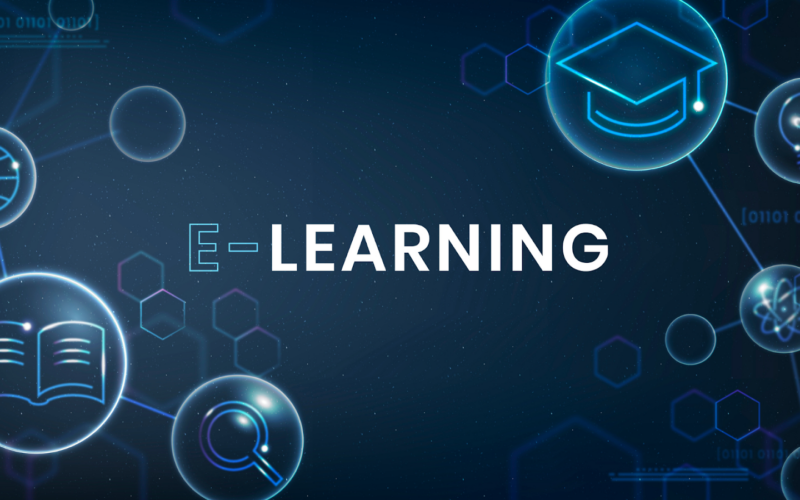Technology in healthcare is changing the way we approach patient care, making it faster, more efficient, and often more affordable. From AI-driven diagnostics to remote patient monitoring, these advancements are saving lives and reducing costs.
For instance, medical AI algorithms used in U.S. care are now under scrutiny: Over 97% of recalled medical devices were approved through quick 510(k) pathways, prompting calls for stricter oversight. While these innovations hold immense potential, they also come with challenges, like reliability and regulatory concerns.
In this article, we’ll dive into how technology is transforming healthcare, the benefits it offers, and the hurdles that need addressing.
In a Nutshell:
- Milestones: From medical imaging to AI, healthcare technology has advanced through key innovations that have transformed diagnosis, treatment, and patient care.
- Trends: Current trends like AI-driven diagnostics, telemedicine, and wearable tech are revolutionizing healthcare, improving efficiency and patient outcomes.
- Ethical Considerations: As healthcare technology grows, challenges around data security, AI accountability, and equity must be addressed to ensure responsible use.
- Codewave: At Codewave, we help healthcare providers integrate advanced technology to improve patient care, streamline operations, and drive better healthcare outcomes.
The Evolution of Healthcare Technology
The evolution of technology in healthcare has come a long way, from paper records to digital systems. A prime example is the national push to expand broadband and telehealth in rural clinics, backed by a $65 billion federal investment.
While this is improving access for remote patients, challenges remain, such as infrastructure issues, data security, and patient engagement.
From early innovations like X-rays to innovative AI, technology in healthcare has continuously evolved to improve patient care and outcomes.
Here’s a look at how we got here.
1. Early Innovations: The Foundations
The first major breakthrough came with X-rays in the late 1800s, which allowed doctors to see inside the body without surgery. This changed how diseases were diagnosed, offering a less invasive way to detect fractures and internal issues.
In the 1960s, the shift from paper-based records to electronic systems started. This change made it easier for doctors to store and share patient information, reducing the chances of errors and improving the coordination of care.
2. The Rise of Digital Healthcare
In the 1990s, EMRs started replacing paper records, allowing for more efficient data management and reducing administrative workload. They also helped streamline communication between healthcare providers, making patient care smoother.
Telemedicine began in the 1990s, initially using phone calls for consultations. It soon expanded to video calls, making healthcare accessible to people in remote areas and those unable to visit a doctor in person.
This technology helped reduce wait times and improved access to healthcare.
3. Technological Milestones: Modern Healthcare
The early 2000s brought robotic surgery systems like the da Vinci Surgical System, which allowed for minimally invasive procedures. These systems improved the precision of surgeries, sped up recovery times, and reduced the risk of complications.
In the 2010s, AI began being used to assist in diagnosing diseases, analyzing medical images, and creating personalized treatment plans. AI made healthcare faster, more accurate, and helped doctors make better decisions based on data.
Struggling with turning healthcare data into actionable insights? Explore Codewave’s Healthcare Data Analytics Solutions to transform your data into smarter, data-driven decisions. Start optimizing patient care today!
Now, let’s explore the latest trends that are pushing the boundaries of patient care and shaping the future of the industry.
Current Technological Trends in Healthcare
The U.S. Core Data for Interoperability Version 6 (USCDI v6) just launched, setting the new national standard to boost patient safety and streamline health data exchange across providers. This marks a pivotal moment as current healthcare trends, like AI diagnostics, telemedicine, and wearable devices, continue to reshape the industry.
Building on these milestones, let’s take a look at the trends driving the next wave of innovation in healthcare.
Personalized Medicine with Genomics
Personalized medicine, also known as precision medicine, uses a person’s genetic information to tailor medical treatments and therapies specifically to them. By analyzing an individual’s DNA, doctors can predict how a patient will respond to certain treatments, select the most effective medications, and minimize potential side effects.
The purpose is to move away from the “one-size-fits-all” approach to healthcare and offer more targeted, effective solutions.
History: The Human Genome Project, completed in 2003, was a landmark achievement in mapping the entire human genome. This breakthrough provided the foundation for understanding genetic factors in disease and opened the door for targeted therapies.
Benefits and Challenges
| Benefits | Challenges |
| Targeted treatments with higher success rates. | Expensive, with limited access for some. |
| Fewer side effects from medications. | Concerns over privacy and data security. |
| Better patient outcomes through tailored care. | Lack of sufficient genomic research for some diseases. |
| Early disease detection through genetic markers. | Challenges in integrating genomics into clinical practice. |
Future Outlook
Personalized medicine, especially in cancer care, is moving toward becoming standard practice. For instance, Kymriah (tisagenlecleucel), a gene therapy approved by the FDA for certain cancers, uses genetically modified T-cells to target and destroy cancer cells.
The treatment has shown exceptional success rates in clinical trials, with some patients going into remission after a single treatment.
AI-Driven Predictive Healthcare
AI-driven predictive healthcare uses machine learning algorithms and vast amounts of data to forecast health outcomes, predict disease progression, and optimize treatment plans.
History: AI’s role in healthcare began in the 1960s with early attempts at using computers for medical diagnoses. However, it wasn’t until the 2000s that AI started making a significant impact, with advancements in machine learning and data analytics leading to more accurate predictions.
Benefits and Challenges
| Benefits | Challenges |
| Enables early detection and prevention of diseases. | Requires large, high-quality datasets to be effective. |
| Optimizes treatment plans and improves patient outcomes. | Data privacy concerns and ethical issues around AI decision-making. |
| Reduces hospital readmissions through proactive care. | High costs of implementing AI-driven systems. |
| Helps in managing chronic diseases with personalized predictions. | Need for healthcare professionals to trust and adapt to AI recommendations. |
Future Outlook
AI’s potential in predictive healthcare is vast, with the technology in healthcare continually improving. A notable example is IBM Watson Health, which uses AI to analyze medical data and provide predictive insights. In a study conducted with Memorial Sloan Kettering Cancer Center, Watson was able to recommend personalized cancer treatment options with remarkable accuracy.
The AI system offered patients tailored therapies based on their specific genetic profiles.
Struggling to implement AI in healthcare? Explore Codewave’s AI/ML Development services to create advanced, data-driven solutions that improve patient care and streamline operations. Start using AI to enhance your healthcare outcomes today!
Augmented Reality (AR) for Surgery and Training
Augmented Reality (AR) technology overlays digital information, such as images, videos, or 3D models, onto the real world, enhancing a surgeon’s view during operations. In healthcare, AR helps visualize organs, blood vessels, and tissues in real time, improving surgical precision and decision-making.
History: AR in healthcare began with basic visualizations for educational purposes in the early 2000s. Over time, AR technology in healthcare has advanced, with medical equipment manufacturers integrating AR into surgery, allowing surgeons to view critical information without looking away from the patient.
Benefits and Challenges
| Benefits | Challenges |
| Enhances precision during complex surgeries. | High cost of AR equipment and technology. |
| Improves medical training with realistic simulations. | Requires significant training for healthcare professionals. |
| Reduces the need for large incisions and improves recovery times. | Potential technical failures or glitches during surgery. |
| Enables real-time visualization of critical data during surgery. | Limited availability of AR systems in smaller medical centers. |
Future Outlook
AR is poised to revolutionize both surgery and medical training. For instance, Touch Surgery, a UK-based company, uses AR to simulate surgeries for educational purposes, providing realistic, hands-on practice for medical students and professionals.
Bioprinting for Organ and Tissue Regeneration
Bioprinting is a process that uses 3D printing technology to create biological tissues and organs. It involves printing layers of living cells onto a scaffold, gradually building up complex tissue structures. The goal is to create functional organs and tissues for transplant or to study diseases, advancing organ regeneration, and offering a potential solution to transplant shortages.
History: Bioprinting began in the early 2000s, with researchers focusing on printing simple tissue structures. Early bioprinting primarily focused on producing skin, cartilage, and other tissues for testing drugs.
Benefits and Challenges
| Benefits | Challenges |
| Potential to solve the organ transplant shortage. | Difficulty in printing complex tissues with full functionality. |
| Provides personalized tissue for patients with specific needs. | High cost of equipment and materials. |
| Advances drug testing by providing 3D models of human tissues. | Ethical concerns surrounding the use of stem cells. |
| Allows for better understanding of disease processes and potential treatments. | Current bioprinted tissues are limited in size and complexity. |
Future Outlook
Researchers at Wake Forest Institute for Regenerative Medicine have successfully bioprinted functional human tissues, including a bladder, which was later transplanted into patients.
The ability to print fully functional organs, such as kidneys and hearts, could significantly reduce transplant waiting lists and lead to breakthroughs in personalized healthcare.
Blockchain for Transparent Healthcare Data
Blockchain is a decentralized digital ledger technology that ensures secure, transparent, and immutable record-keeping. In healthcare, it can be used to manage patient data, medical records, and the supply chain for pharmaceuticals, providing a secure and transparent method for data exchange across healthcare providers.
The aim is to prevent fraud, enhance data security, and streamline the sharing of patient information between authorized parties.
History: In the last decade, healthcare institutions began exploring blockchain for applications in managing patient records and improving the transparency of drug distribution.
Early pilots focused on securing electronic health records (EHRs) and ensuring that data could be shared across institutions without compromising privacy or security.
Benefits and Challenges
| Benefits | Challenges |
| Enhances security and privacy of sensitive patient data. | Scalability issues for widespread implementation. |
| Ensures data integrity with an immutable ledger. | High cost of setting up and maintaining blockchain systems. |
| Facilitates seamless, secure data exchange across healthcare providers. | Regulatory and legal challenges surrounding data ownership. |
| Reduces fraud in drug distribution and medical records. | Resistance from healthcare providers due to the complexity of technology. |
Future Outlook
A notable example is MedRec, a blockchain-based system developed by MIT to manage patient records. The platform allows patients to control their health data and gives healthcare providers secure access, improving both privacy and the efficiency of data sharing.
While these technological advancements offer exciting possibilities, they also bring forth important challenges and ethical dilemmas that must be addressed to ensure responsible use in healthcare.
Challenges and Ethical Considerations
As technology in healthcare advances, it’s essential to address the challenges and ethical concerns that come with it. From data privacy to AI accountability, these issues must be tackled to ensure technology benefits patients and providers alike.
Let’s explore the key obstacles ahead.
1. Data Privacy and Security
The growing use of digital records and telemedicine increases the risk of sensitive patient information being exposed or hacked. With healthcare moving online, the number of cyberattacks targeting health systems has risen sharply, putting patient data at risk.
How to Address This:
- Implement robust encryption and data security measures to protect patient information.
- Regularly update cybersecurity protocols and conduct risk assessments to stay ahead of threats.
- Ensure healthcare organizations comply with data protection laws, like HIPAA, to maintain high privacy standards.
2. AI Decision-Making and Accountability
AI systems are becoming integral to diagnosing diseases, recommending treatments, and managing patient care. However, when an AI system makes an incorrect decision, it can be challenging to pinpoint responsibility.
How to Address This:
- Establish clear guidelines for AI accountability, ensuring both developers and healthcare providers are responsible.
- Ensure transparency in AI models, making their decision-making process understandable and auditable.
- Involve human oversight in critical decision-making processes to prevent errors and safeguard patients.
3. Bias in Algorithms
Many AI and machine learning models used in healthcare are trained on data that may not represent the diverse range of patients in real-world settings. This can lead to biased results, potentially causing unequal treatment, especially among underrepresented groups.
How to Address This:
- Use diverse and inclusive datasets when training AI models to reflect a broad spectrum of patients.
- Regularly audit and evaluate AI systems for potential biases, adjusting algorithms as needed.
- Foster collaboration between healthcare professionals and AI developers to ensure fairness and ethical considerations in model design.
4. Access and Equity
While healthcare technology, such as AI diagnostics and telemedicine, holds promise for improving care, it can also exacerbate disparities. Many people in rural or underserved areas still lack reliable internet access or the necessary technology to benefit from these innovations.
How to Address This:
- Invest in digital infrastructure to improve internet access and provide affordable tech solutions for underserved areas.
- Develop policies that ensure technology in healthcare is inclusive, allowing everyone, regardless of location or income, to benefit.
- Partner with local organizations to improve access and offer support for communities that need it most.
5. Patient Consent and Data Ownership
As healthcare systems increasingly rely on data sharing and integration, patients may not fully understand how their data is being used or shared. Many people are unaware of the level of access providers, researchers, or third parties might have to their personal health data.
How to Address This:
- Simplify the process for patients to give informed consent, ensuring they clearly understand how their data will be used.
- Offer patients control over who has access to their data, including the ability to revoke access when desired.
- Educate patients about the benefits and risks of data sharing, allowing them to make informed decisions about their health information.
Discover the powerful potential of generative AI in healthcare and how its innovative use cases are transforming patient care, diagnostics, and medical research.
As technology in healthcare continues to evolve, its potential to improve care and accessibility is immense. By addressing the challenges and ethical concerns, we can ensure these innovations benefit everyone, shaping a healthier future for all.
Why Choose Codewave for Healthcare Technology Solutions?
When you’re looking to bring technology in healthcare to life, you need more than just a tool. At Codewave, we help you create tailored, user-friendly solutions that address real challenges in the healthcare sector. By combining tech with deep industry knowledge, we turn ideas into practical, effective solutions that improve patient care and streamline operations.
Curious to see how Codewave’s healthcare technology solutions can make a real impact? Explore our portfolio to see how we’ve helped businesses turn innovative ideas into effective, patient-centered healthcare tools.
What you get with Codewave’s AI solutions for healthcare:
- 60% faster turnaround in developing and deploying GenAI-powered tools like clinical decision support systems, patient chatbots, and health data analysis assistants.
- 3x quicker pilot-to-production cycle, enabling you to implement GenAI applications like predictive diagnostics or patient support automation with minimal delays.
- Save up to 3 weeks each month by reducing manual effort in patient record management, treatment planning, and doctor-patient communication.
- 25% lower development costs through AI-driven workflows designed to integrate with your existing healthcare systems and patient data seamlessly.
Our Generative AI services for healthcare:
- GenAI Integration for Healthcare Systems: We evaluate your goals and create tailored generative AI use cases for patient care, administration, and more.
- Custom GenAI Tool Development: From concept to deployment, we build tools like clinical decision aids, medical record analyzers, and patient chatbots that simplify workflows.
- Advanced AI Feature Integration: We embed GenAI into your existing platforms for real-time insights, smart automation, and personalized responses across healthcare teams.
- Operational Analytics & Optimization: We offer dashboards and reporting tools powered by GenAI to track performance, reduce bottlenecks, and make data-backed decisions.
Curious to see how AI can transform your healthcare operations? Book a session with Codewave’s experts and explore how we can turn your data into actionable insights.
FAQs
Q. Will integrating technology in healthcare reduce the need for human healthcare professionals?
A. While technology in healthcare can automate certain tasks, it is not meant to replace healthcare professionals. Instead, it enhances their capabilities by providing tools for quicker decision-making, more accurate diagnoses, and better management of patient data. Technology allows healthcare workers to focus on patient care while automating repetitive administrative tasks.
Q. How can healthcare systems manage the complexity of integrating new technologies with existing infrastructure?
A. Begin by assessing your current systems and identifying areas that would benefit most from technology in healthcare. Work with vendors who offer scalable solutions and provide a step-by-step integration plan. Regular training and support for staff are crucial, as is establishing clear communication channels to address challenges as they arise.
Q. How can technology in healthcare help reduce hospital readmissions?
A. Technology in healthcare, like remote patient monitoring and predictive analytics, can identify early warning signs of health deterioration. By tracking patient data in real-time, healthcare providers can intervene before conditions worsen, thus reducing the likelihood of readmissions and improving patient outcomes.
Q. How can technology in healthcare improve the doctor-patient relationship?
A. Technology in healthcare enables better communication through telemedicine, patient portals, and real-time data sharing. These tools give patients more control over their care while allowing doctors to stay connected, ultimately improving the relationship and overall patient satisfaction.
Q. How does technology in healthcare help with chronic disease management?
A. Technology in healthcare aids chronic disease management by offering tools for remote monitoring, real-time health data analysis, and personalized treatment plans. These solutions help patients and healthcare providers track symptoms, adjust medications, and prevent complications, leading to better health outcomes.
Codewave is a UX first design thinking & digital transformation services company, designing & engineering innovative mobile apps, cloud, & edge solutions.







